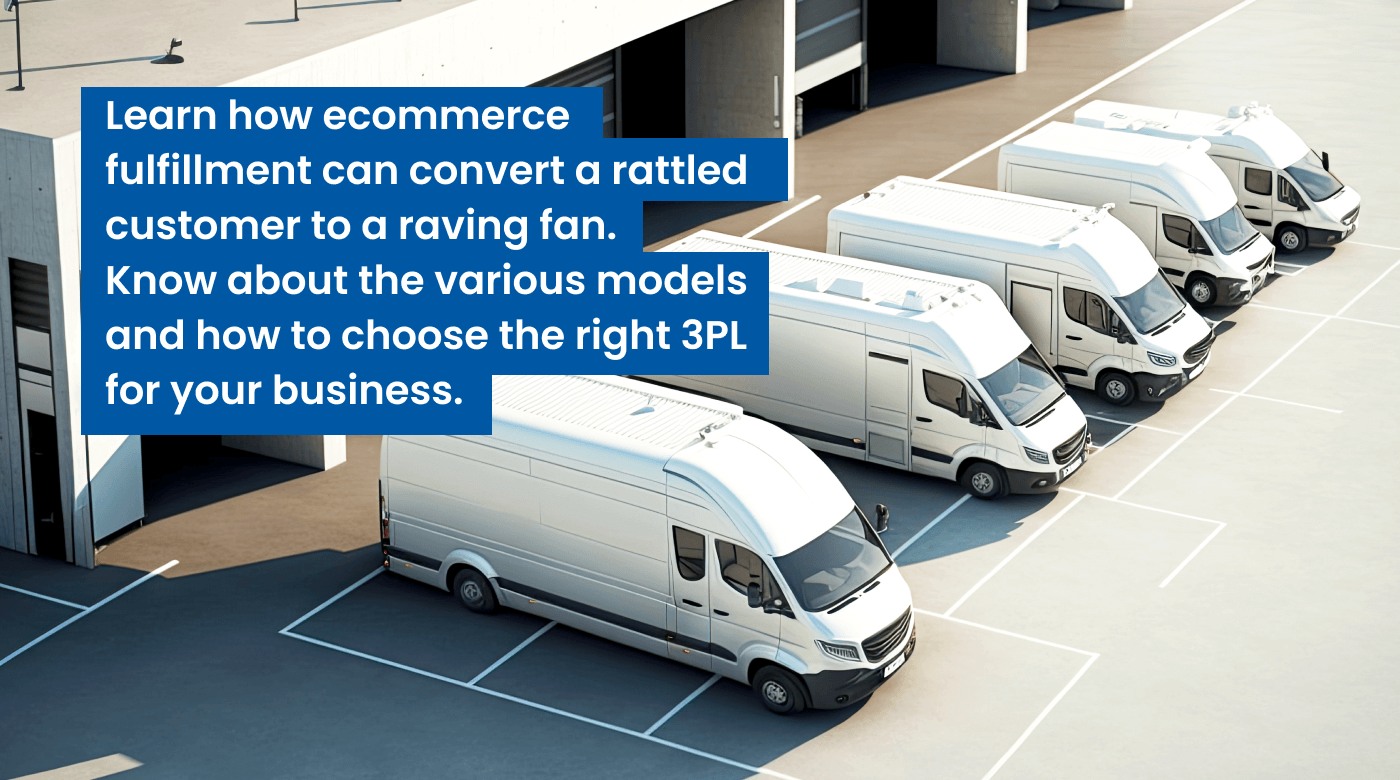Ecommerce has skyrocketed in the past few years. Due to the massive consumer shift towards online shopping during the pandemic, the industry has experienced an estimated 10 years growth in just a quarter. Online shopping will reach $1 trillion in revenue in 2023 and top $1.5 trillion by 2026.
Many people who start an online business spend a lot of time creating a beautiful website and marketing their products with ads, social media, and email. They focus on making the sale — leaving another critical part of ecommerce totally in the dark: fulfillment.
Ecommerce fulfillment is the difference between a raving customer and a rattled one. In this article, we’ll cover ecommerce fulfillment, the stages in the fulfillment process, and three ecommerce fulfillment models. Finally, we’ll explain how to choose a model.
What is ecommerce fulfillment?
Ecommerce fulfillment includes the storage, packing, shipping, and delivery of ecommerce orders. The process of ecommerce fulfillment begins even before placing an order because the business must organize and store its products in an appropriate environment.
The process of fulfilling an ecommerce order begins when the order is processed and received by the fulfillment provider. From there, staff pick the products from inventory and pack them for shipping and delivery. The process often ends with the order being delivered to the customer, but ecommerce fulfillment also includes accepting and processing returns.

Ecommerce fulfillment can be performed in-house by the ecommerce business, or the business can outsource it to vendors.
Why is ecommerce fulfillment important?
Ecommerce fulfillment is the mechanism that gets the product to the customer. It determines how quickly and efficiently the order gets there. Customers have already paid, so they expect to receive the order promptly. In fact, 91% of customers expect to receive an order within a week, and 70% say they would be upset if the order does not arrive on time.
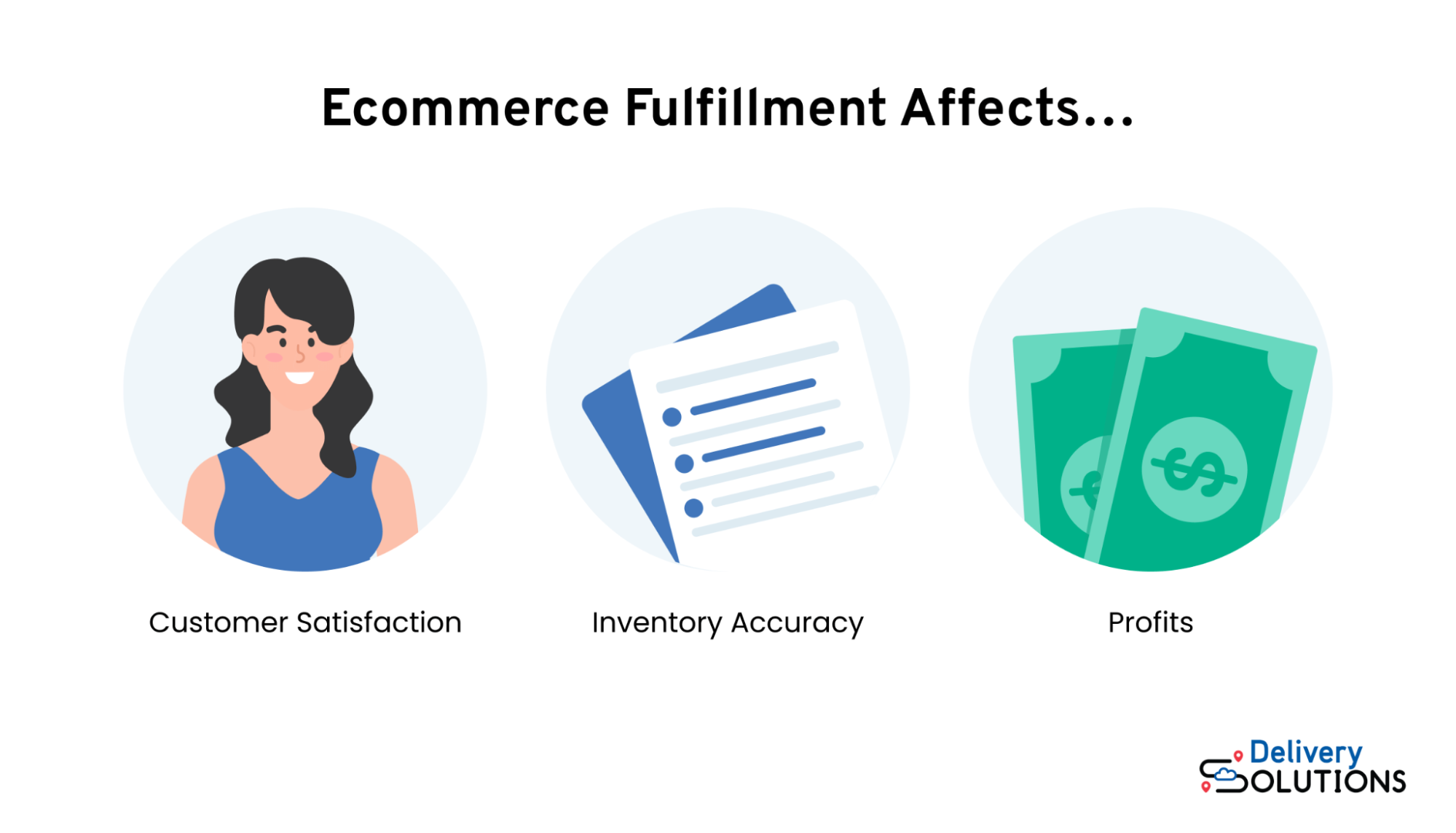
But it’s not just about making customers happy. Ecommerce fulfillment affects your ability to batch orders, your ability to know what products are in stock, and when to order more materials. And fulfillment costs can vary greatly, affecting your business’s bottom line and the price the customer pays.
3 stages of ecommerce fulfillment
Ecommerce fulfillment includes many steps in the process of getting products to customers. Still, there are three main stages of fulfillment that all ecommerce companies need to consider.
1. Stock and store
You must store your products somewhere — in your garage or a massive warehouse.
The first step in an effective fulfillment process is getting your products stocked and stored appropriately. This means having an organized supply of products from which workers can efficiently pick orders and accurate inventory tracking so that you can order more materials or products when needed.
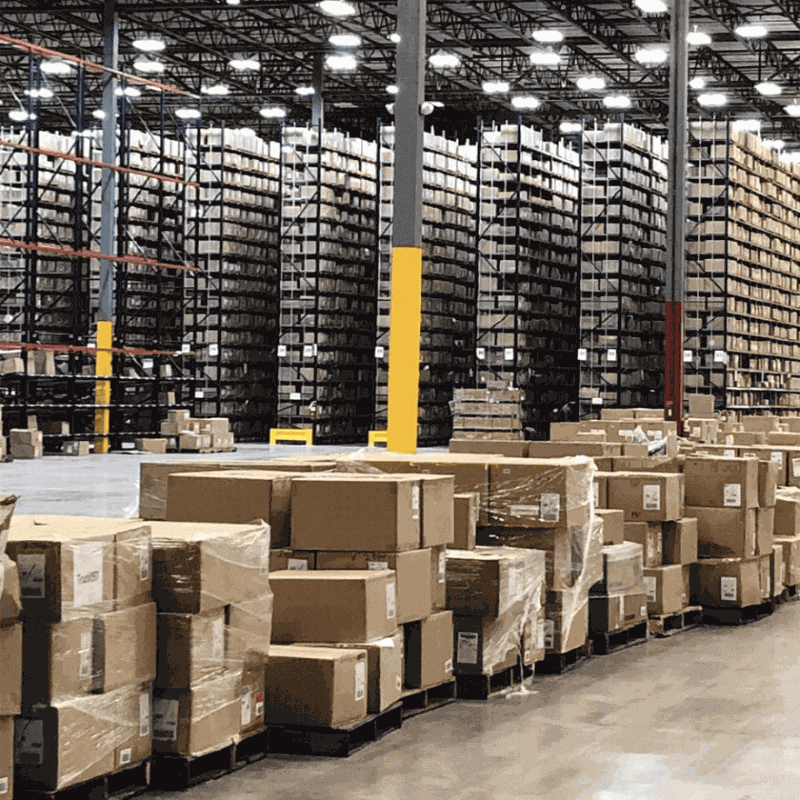
If you’re fulfilling orders in-house, it’s up to you to keep everything stocked and organized. If you’re using a third party, the location and performance of their warehouses are key factors in choosing who to work with.
Both in-house and outsourced fulfillment centers use stock-keeping units (SKUs) to identify, locate, and track the right products. The right partner can even advise online retailers on inventory management and preparing for seasonal changes.
2. Process order
Once a customer has placed an order, you or your fulfillment provider will begin processing it. This usually starts with ensuring that the order record is sent to the fulfillment center with all the necessary information (shipping address, regular or rush delivery, etc.).
Once the fulfillment center has the order, you move on to “pick and pack.” The “picking” refers to finding each product in the order and picking it from the warehouse shelves. If you’re running a small business out of your garage, this might be a simple task, but if your business is larger or uses a third-party fulfillment vendor, it gets more complex. Fulfillment centers can hold thousands of different products across tens of thousands of square footage. This is why SKUs and their organization are so important.
The “pack” in “pick and pack” refers to packing each item in the order. This means arranging all products in the order in one or more packages (shipping boxes, envelopes, or bags). Fulfillment experts are trained in how to pack orders to prevent damage or loss.
3. Ship and deliver
Shipping and delivering the order to the customer is usually the last step (we’ll discuss returns later). There are many shipping providers and fulfillment services to choose from. This is beneficial because you have many options with varying shipping costs and speeds, but evaluating, choosing, and working with these many vendors can also become daunting.
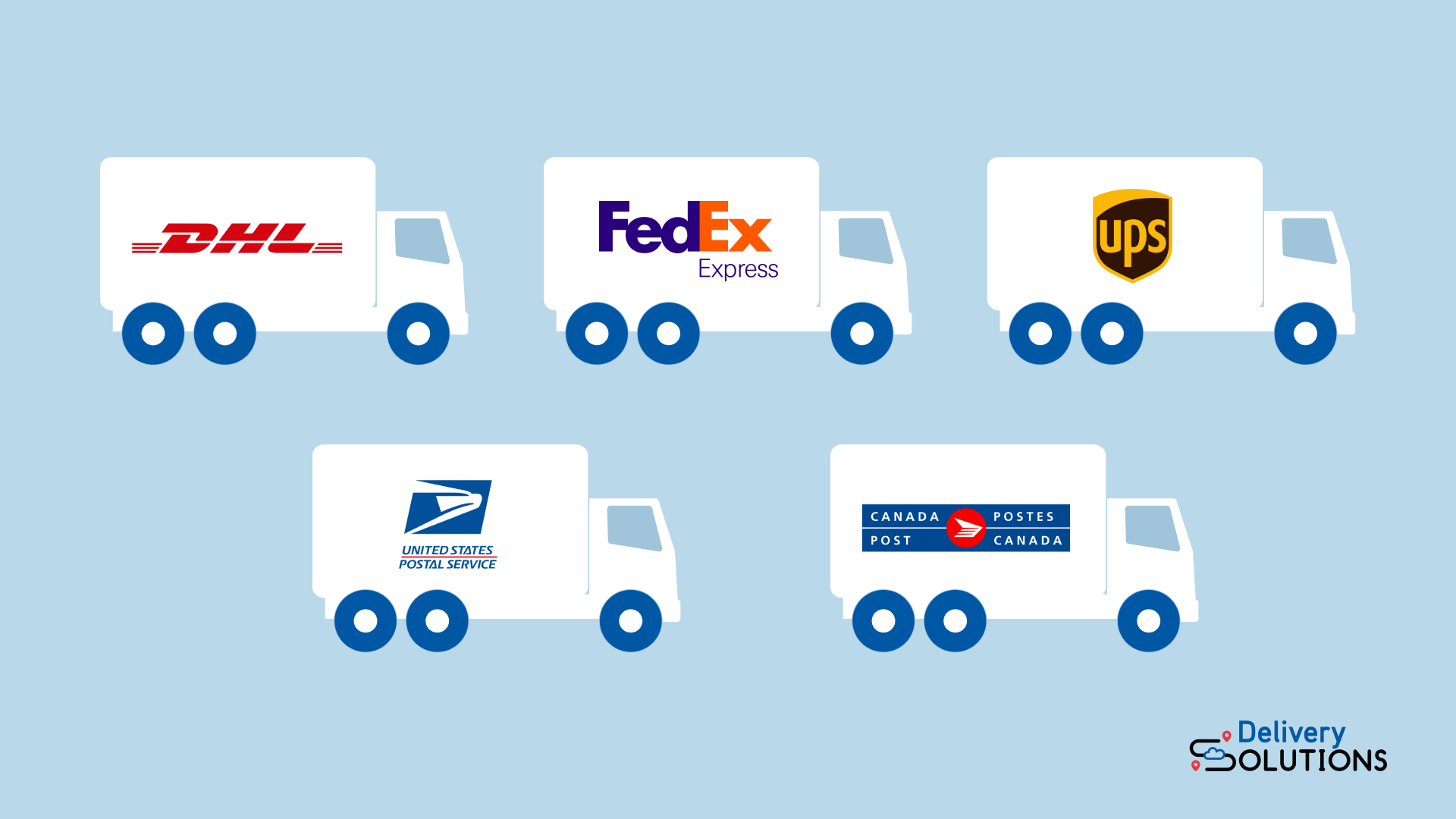
The last mile delivery problem is one of the biggest complications of this stage.
The “last mile” refers to the final delivery stage, where orders are delivered to individual customers. This is incredibly time-consuming and labor-intensive. How an ecommerce business handles the last mile problem greatly impacts the cost and speed of fulfillment. Consequently, it has a big impact on the customer experience.
Ecommerce fulfillment models
With so many different parts of the process, there are multiple ways to handle ecommerce fulfillment. While each business will have its own system, most will fall into one of three main ecommerce fulfillment models.
In-house fulfillment
In-house fulfillment means that an ecommerce business handles its own order fulfillment operations. The business will organize, order, and store its own inventory. The business owner or staff will pick and pack products and manage all delivery providers.
This approach makes sense for many new or very small businesses. If, for example, you sell handmade quilts out of your home, you may be able to store, pack, and ship all your orders. As a business grows, however, in-house fulfillment can quickly become untenable. You may run out of space for inventory or receive more orders than you can fulfill in your promised delivery timeline.
The upside of in-house fulfillment is that you have full visibility and control of your ecommerce fulfillment process
Third-party fulfillment
If you don’t handle your ecommerce fulfillment in-house, you must look to a third party. Because they are not the ecommerce business (the first party) or the customer (the second party), external businesses that handle logistics are called third-party vendors or third-party logistics (3PL).
A third-party logistics company specializes in order fulfillment, often owning or renting warehouse space and employing order fulfillment staff to pick and pack. An ecommerce business can contract with a 3PL business to handle inventory storage and management, order fulfillment, and even customer service, such as returns.
Using a third-party logistics service like Ware2Go is one way small businesses can implement one- or two-day shipping. Some 3PL providers can also use their relationships with major delivery services to negotiate discounted shipping rates. Fulfillment By Amazon is another popular fulfillment partner for many small ecommerce stores because it gives them access to Amazon’s worldwide fulfillment centers and shipping operations.
Because it also involves outsourcing order fulfillment, dropshipping is often confused with third-party logistics. A dropshipping business is an online retailer that interacts with customers and accepts orders from them. However, these products are owned and fulfilled by another business. The third-party logistics service, on the other hand, deals with other businesses and provides inventory management and logistics services to them.
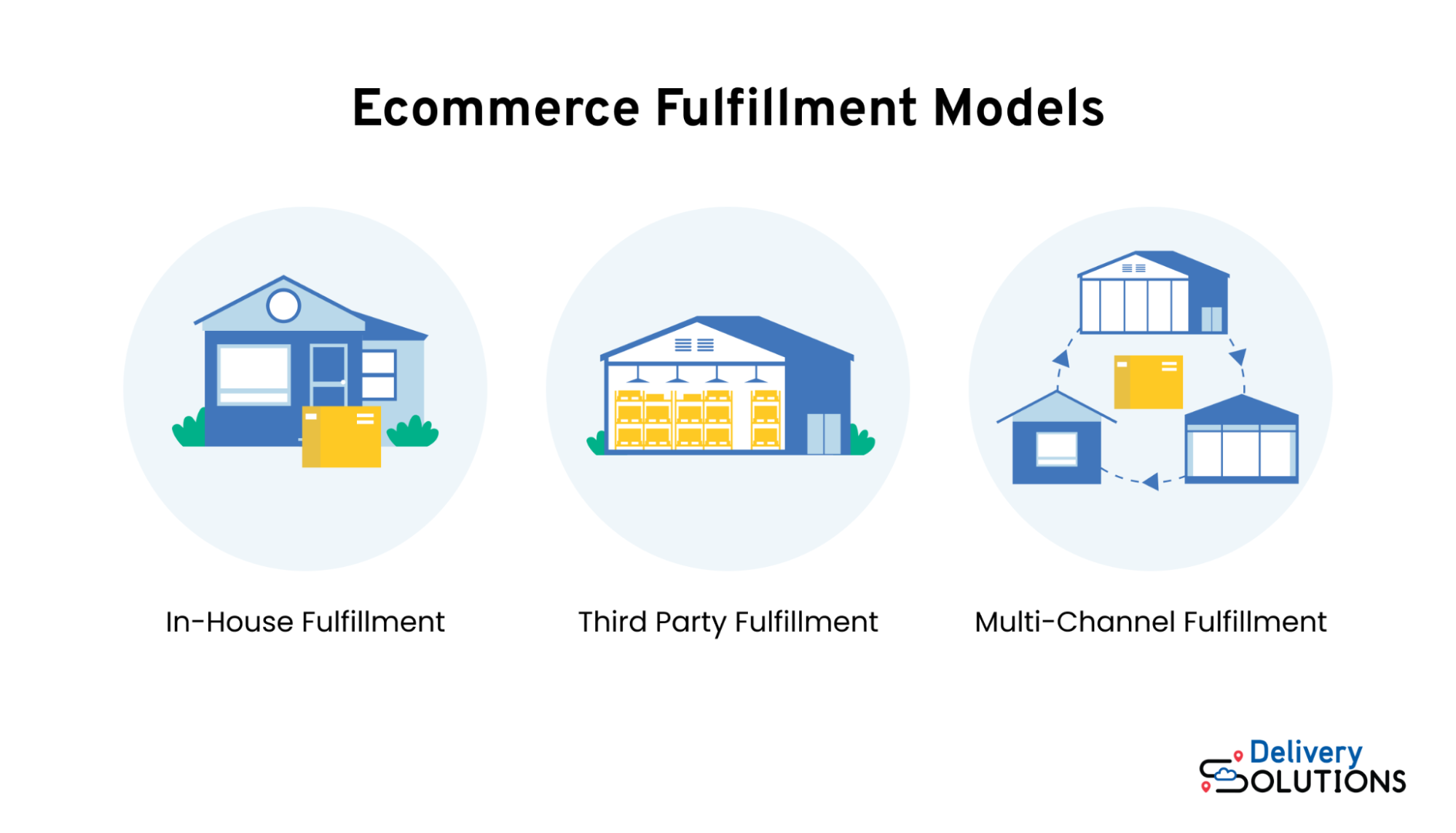
Multi-channel fulfillment
Multi-channel fulfillment is when a business uses more than one fulfillment method. This can mean performing part fulfillment in-house and outsourcing other orders to a third-party partner. It can also mean working with multiple 3PL companies. When you have access to multiple fulfillment companies, you aren’t locked into a single 3PL service, so you can shop around to maximize speed and minimize cost.
How to choose an ecommerce fulfillment model
Now that you understand the most common ecommerce fulfillment models, you might wonder which is right for your business. The answer depends on the specific needs of your business.
The size and scale of your business are a good place to start when choosing between fulfillment models. Your business may be too large for in-house fulfillment. On the other hand, you may lack the resources to manage multiple providers, making a single 3PL partner the best option.
You should also consider the types of products you sell. If you need temperature-controlled storage, that will play into your fulfillment choices. If you are based in Los Angeles but have a large European customer base, you might consider a fulfillment partner in Europe or the East Coast. If you have customers all over the country or worldwide, you should consider 3PL companies with multiple fulfillment locations and distribution centers.
Ecommerce returns and customer service
When surveyed, 49% of American internet users said they had returned an ecommerce purchase in the past year. While clothing and shoes are the most commonly returned items, any ecommerce business should expect to deal with returns (sometimes called reverse logistics). The good news is that some 3PL providers will handle returns and other common customer service issues for you.
With ecommerce returns, your third-party logistics provider not only needs to work with the customer to get the product shipped back, but they also need to do so quickly. Customers don’t want to wait for a refund, and what’s more, the product can’t be resold until the return has been processed.
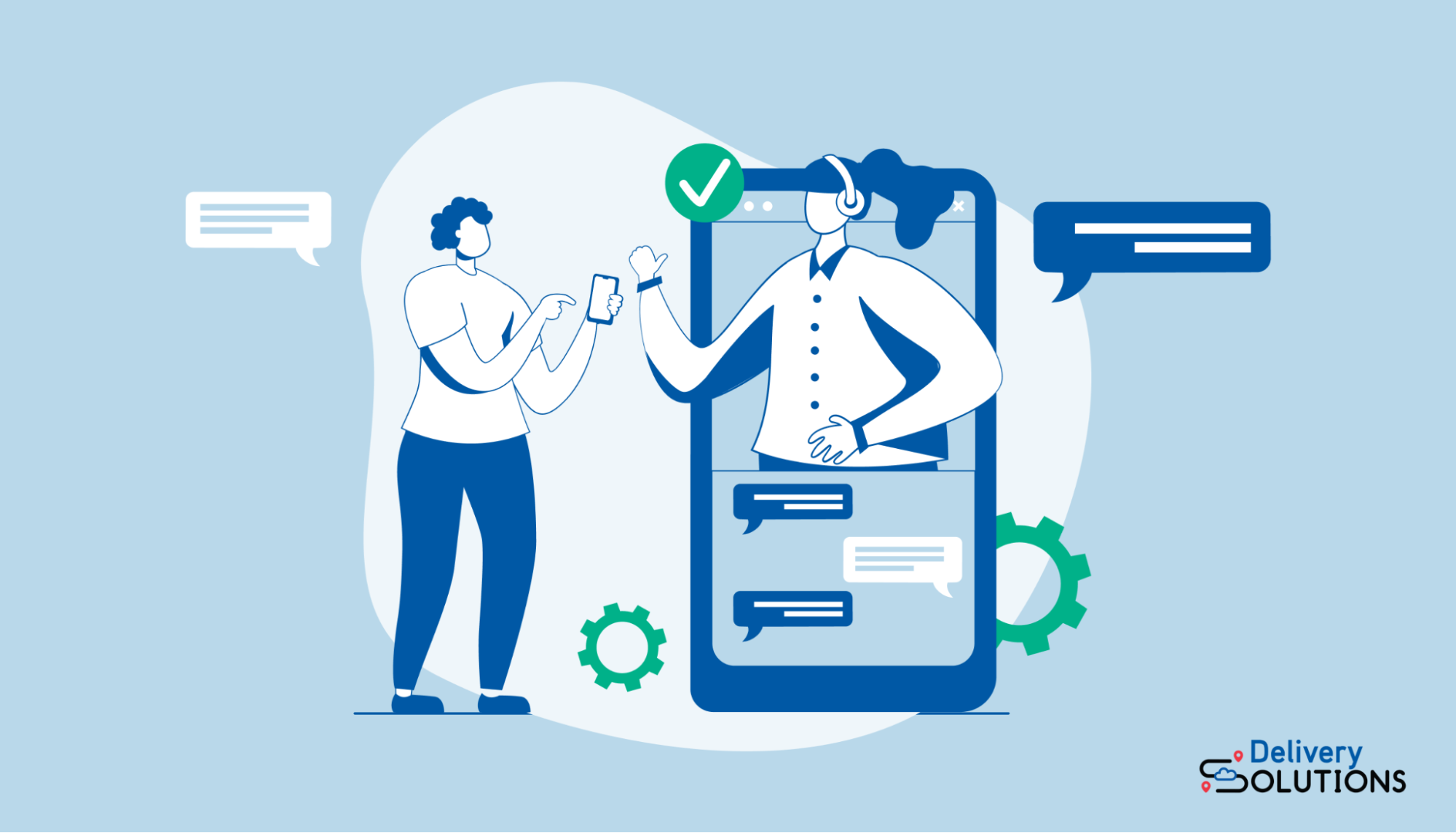
Keep in mind, however, that customer service and the post-purchase experience can have a big impact on customer satisfaction. When considering a 3PL service, businesses should decide what kinds of customer interactions can be passed to a fulfillment partner and what issues must be handled in-house.
Delivery tracking for ecommerce fulfillment
There was a time when the only communication a customer received after their order was a receipt. Today’s customer expectations, however, are much higher.
The vast majority of consumers (9 in 10) track their ecommerce orders after they make a purchase. Whether you handle fulfillment yourself or outsource it, you need to provide updates to customers.
As important as delivery tracking is to customers, it can also be very complex to implement. Effective tracking requires your fulfillment partners to update the order status, and it requires your technology to communicate these updates in an easy-to-understand interface for customers. Delivery Solutions customers, for example, can provide up-to-date locations for each order with text notifications or an order tracking page.
![]()
Effective tracking and communication can improve the customer experience even when things go wrong. One survey found that 95% of shoppers are willing to give retailers more time to deliver products — but only when there’s open communication. If a package is delayed and the customer isn’t informed, 69.7% said they’d be less likely to shop with that retailer again.
Choose 3PL that fulfills your needs
Ecommerce fulfillment is an incredibly important factor in customer satisfaction and plays a huge role in your overall overhead costs. Even small businesses now have choices for handling the storage, packing, and shipping of their orders. Depending on the size and needs of your company, fulfillment can be in-house, outsourced to third parties, or a mix of the two.
When designing the fulfillment process for your ecommerce business, start with honest evaluations of what your business needs for both the type of products you sell and the customers you serve. But it’s also worth considering how your company will grow and scale in the coming years. Delivery Solutions is uniquely positioned to help because it connects you with various third-party logistics and shipping providers.
Ready to see how Delivery Solutions can make ecommerce fulfillment an orderly and efficient experience for you and your customers? Schedule a demo today.
Delivery Solutions orchestrates fulfillment experiences for enterprise retailers, supplying flexible optionality for consumers and priming merchants for innovation at scale.
Ryan Caldarone
Ryan is a Sr. Digital Marketing Manager with over ten years of experience in B2B eCommerce, specializing in brand storytelling and content. Having contributed to hundreds of creative projects for SMBs and startups across the tech, energy, and fine arts sectors, Ryan brings diverse perspectives.
